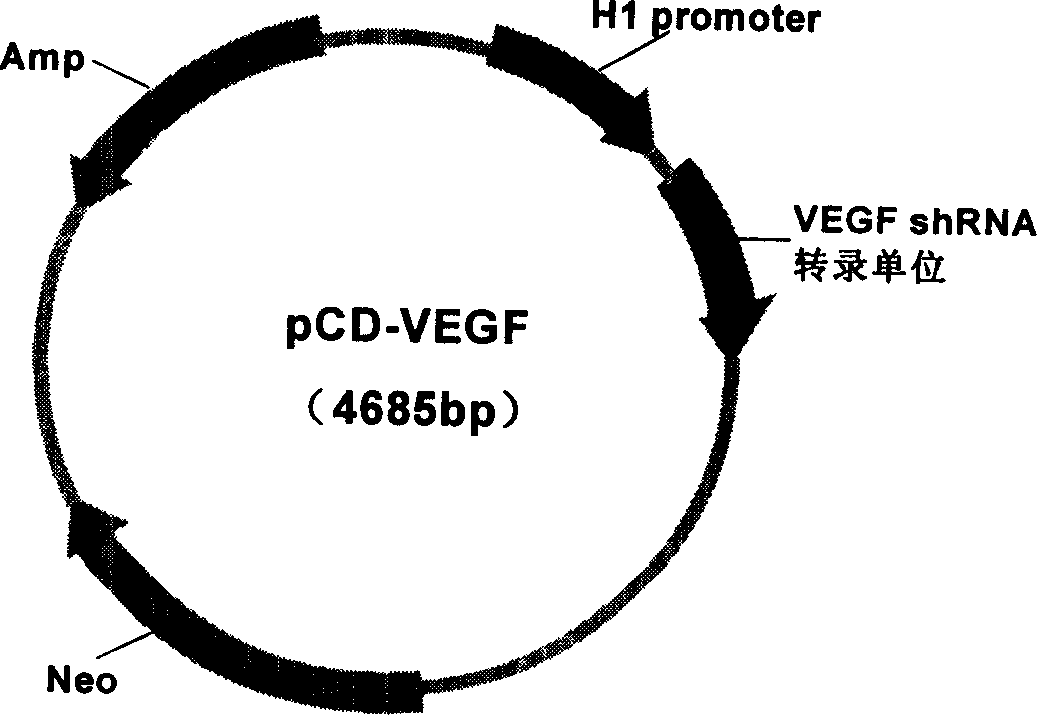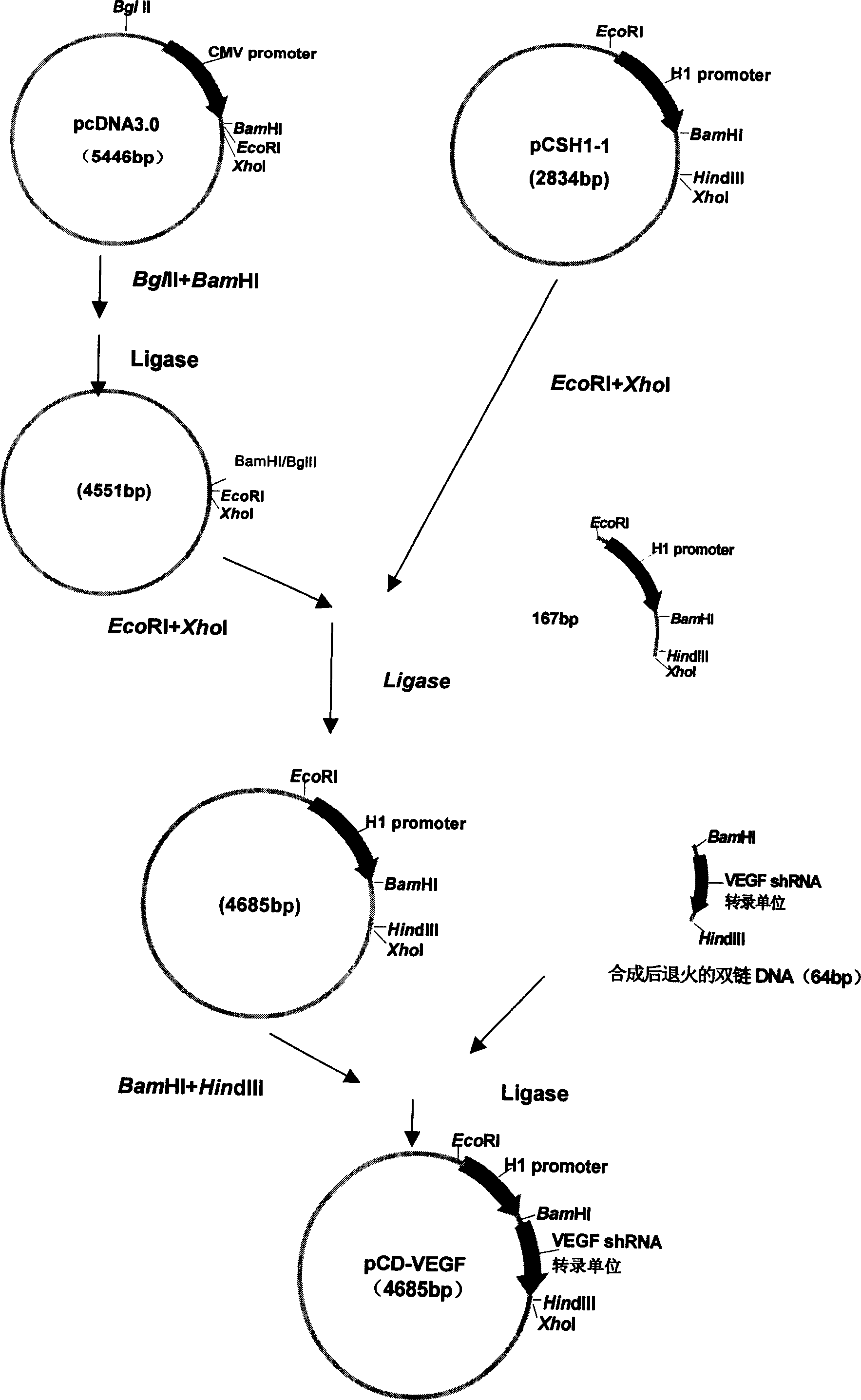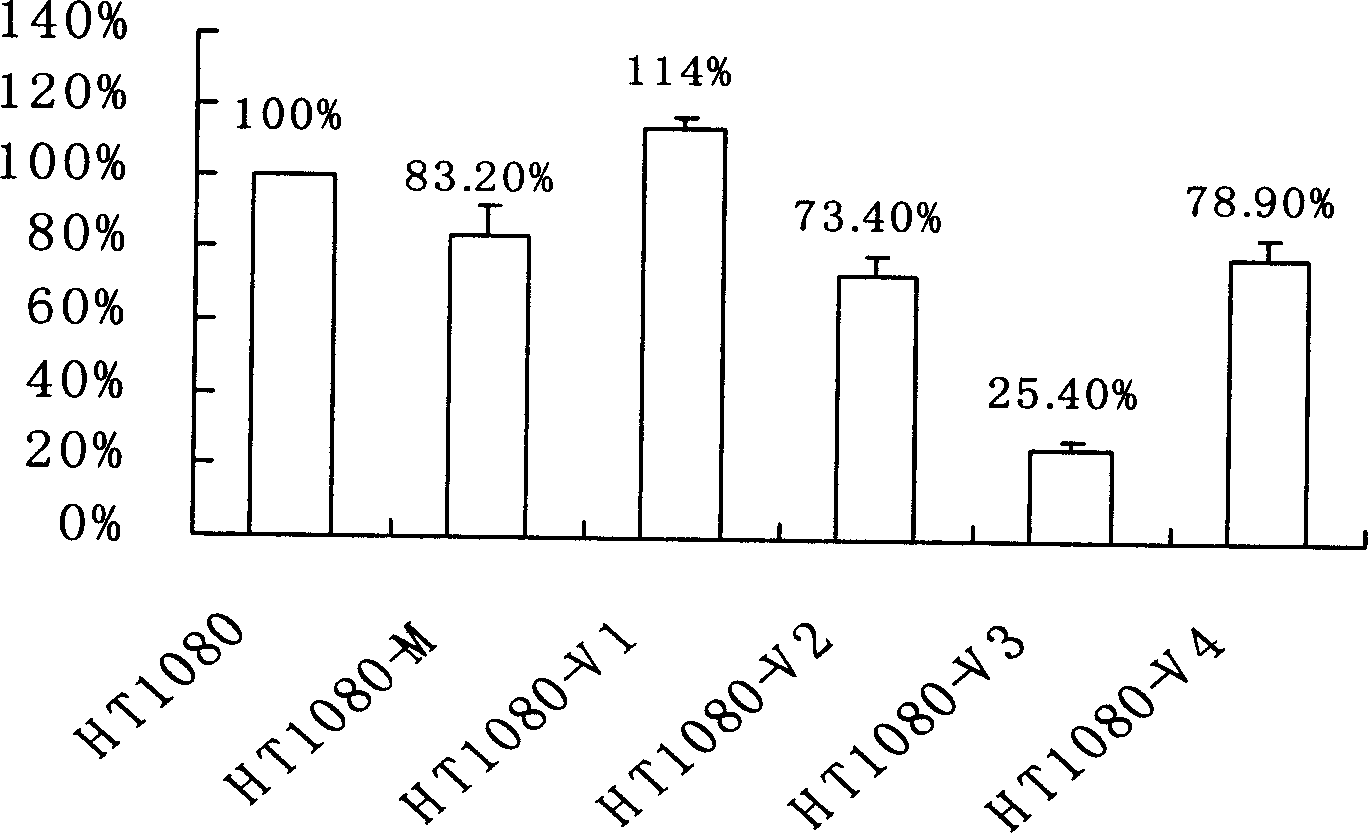Carrier PCD-VEGF able to stable express VEGF shRNA
A technology for stable expression and vector, applied in the field of the vector pCD-VEGF that can stably express VEGF shRNA, can solve the problems of application limitation and high synthesis cost, achieve the best effect, avoid non-specific toxicity, and avoid the effect of cumbersome operation
- Summary
- Abstract
- Description
- Claims
- Application Information
AI Technical Summary
Problems solved by technology
Method used
Image
Examples
Embodiment 1
[0036] Embodiment 1: the design of VEGF shRNA target sequence and its DNA template
[0037] The selection of shRNA target sequences mainly follows the Tushl principle (Methods 2002, 26: 199-213), such as avoiding as much as possible within 50 nucleotides downstream of the start codon and within 100 nucleotides upstream of the stop codon. Sequence; since there are many regulatory protein binding sites in the 5' or 3' untranslated region and near the start codon, these sites are generally not selected; the sequence should avoid excessive GC content, and should avoid continuity in the sequence 3 or more G's appear, etc.
[0038] After the selection, a Blast search is required to ensure that the homology between the target sequence and other genes is very low, and as far as possible to ensure that the designed siRNA has the greatest specific gene silencing effect and the smallest non-specific toxicity and off-target (off-target) effect .
[0039] After the design of the target s...
Embodiment 2
[0057] Embodiment 2: Construction of pCD-VEGF plasmid
[0058] In order to enable the long-term sustained expression of the plasmid in mammalian cells, the plasmid vector needs to have a eukaryotic replication signal and a promoter. For this reason, the present invention has selected the main sequence of the commonly used eukaryotic expression vector pcDNA3.0 as the basic sequence ( figure 1 ). In order to prevent the original CMV promoter from affecting the expression of the shRNA sequence, the CMV promoter was removed by cutting with a restriction endonuclease, and then connected into the H1 promoter for shRNA expression. The specific steps are as follows:
[0059] 1) Use BamHI and BglII endonucleases to double-digest pcDNA3.0 to remove the CMV promoter. Since there is only one BamHI and one BglII restriction site on pcDNA3.0, only two bands appear in the electrophoresis after digestion, the lengths are about 0.9 kb and 4.5 kb respectively, and a large fragment of about 4....
Embodiment 3
[0065] Example 3: Transfection of Interfering Sequence Expression Plasmids and Screening of Mammalian Cell Lines Continuously Expressing shRNA Sequences
[0066] The present invention adopts LipofectAMINE TM 2000 liposomes (Life Technologies, Cat. No. 11668-027) were transfected into human fibrosarcoma cell line HT1080, and the ratio of transfected plasmid mass (μg) to liposome volume (μl) was 1:2.5. The plasmid concentration used was 2 μg / ml. All operations were carried out according to the instructions of liposomes. Twenty-four hours after the transfection, the cells were replaced with a culture solution containing 400 μg / ml G418. After that, the medium was changed every 2-3 days for the cells. After all the cells in the control group (that is, the group not transfected with any plasmid) died, the cells of the transfected pCD-VEGF plasmid group and the cells transfected with the pCD-MOCK plasmid group were digested, and after counting, the selective culture medium ( MEM-...
PUM
 Login to View More
Login to View More Abstract
Description
Claims
Application Information
 Login to View More
Login to View More - R&D
- Intellectual Property
- Life Sciences
- Materials
- Tech Scout
- Unparalleled Data Quality
- Higher Quality Content
- 60% Fewer Hallucinations
Browse by: Latest US Patents, China's latest patents, Technical Efficacy Thesaurus, Application Domain, Technology Topic, Popular Technical Reports.
© 2025 PatSnap. All rights reserved.Legal|Privacy policy|Modern Slavery Act Transparency Statement|Sitemap|About US| Contact US: help@patsnap.com



